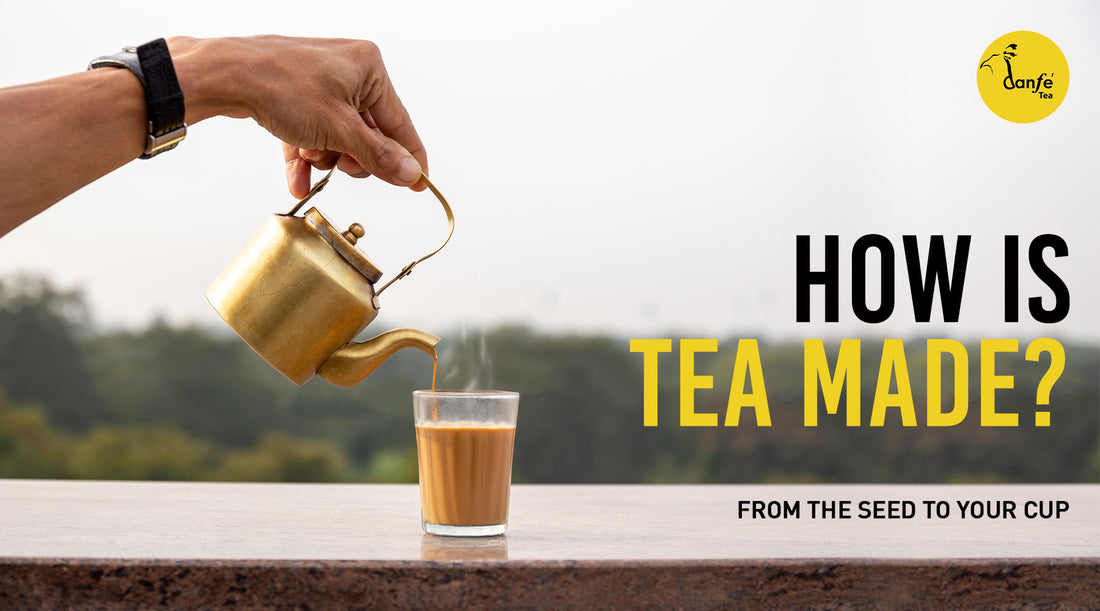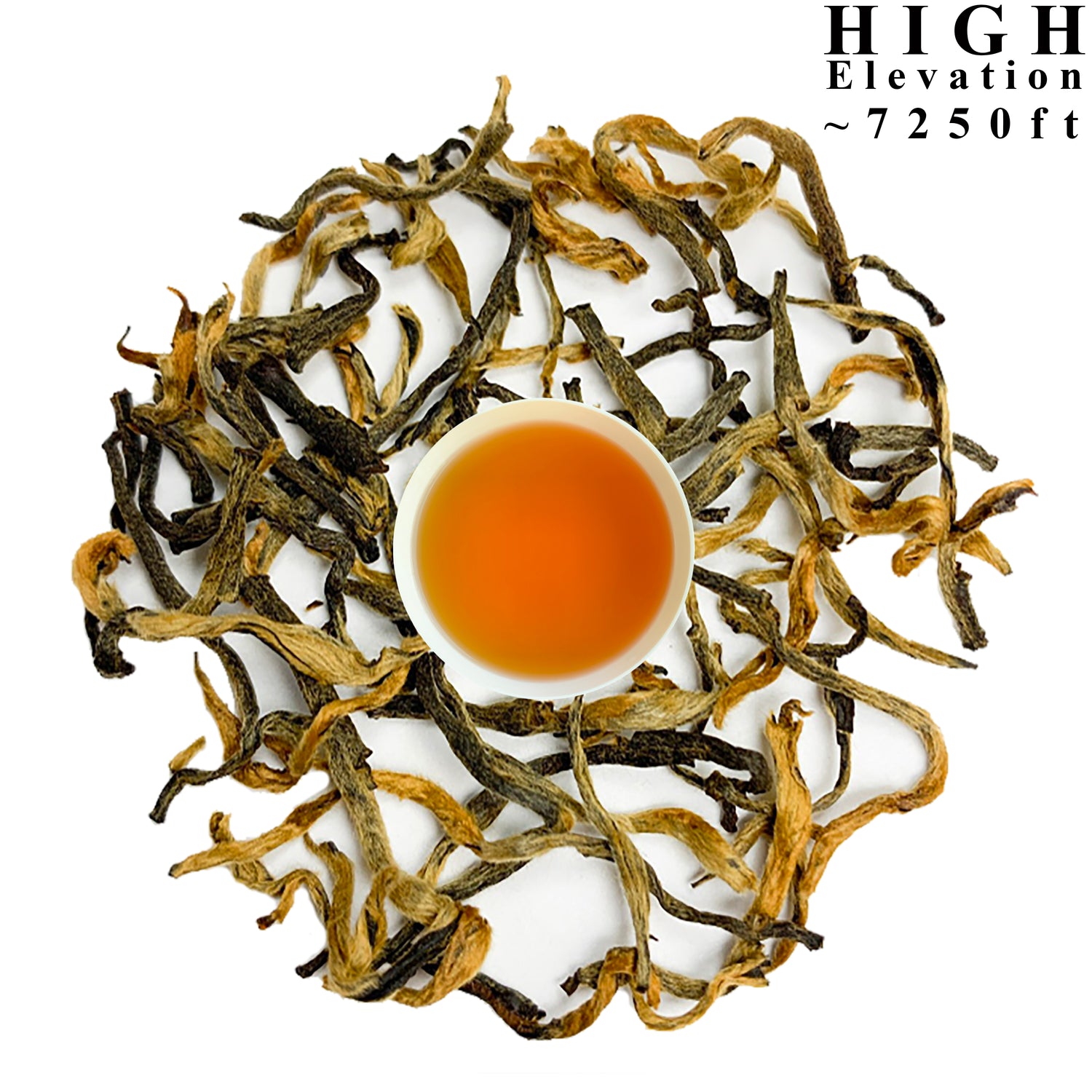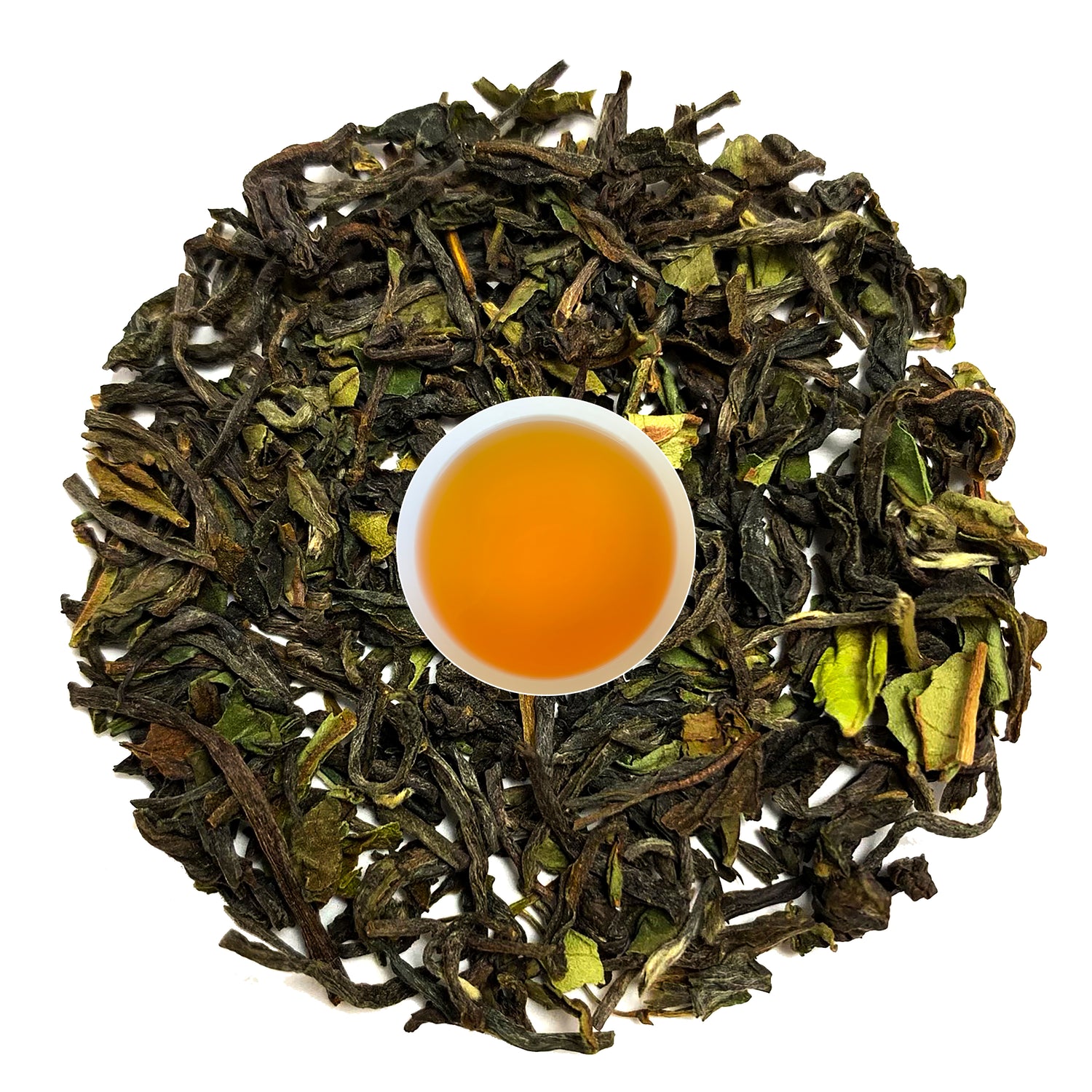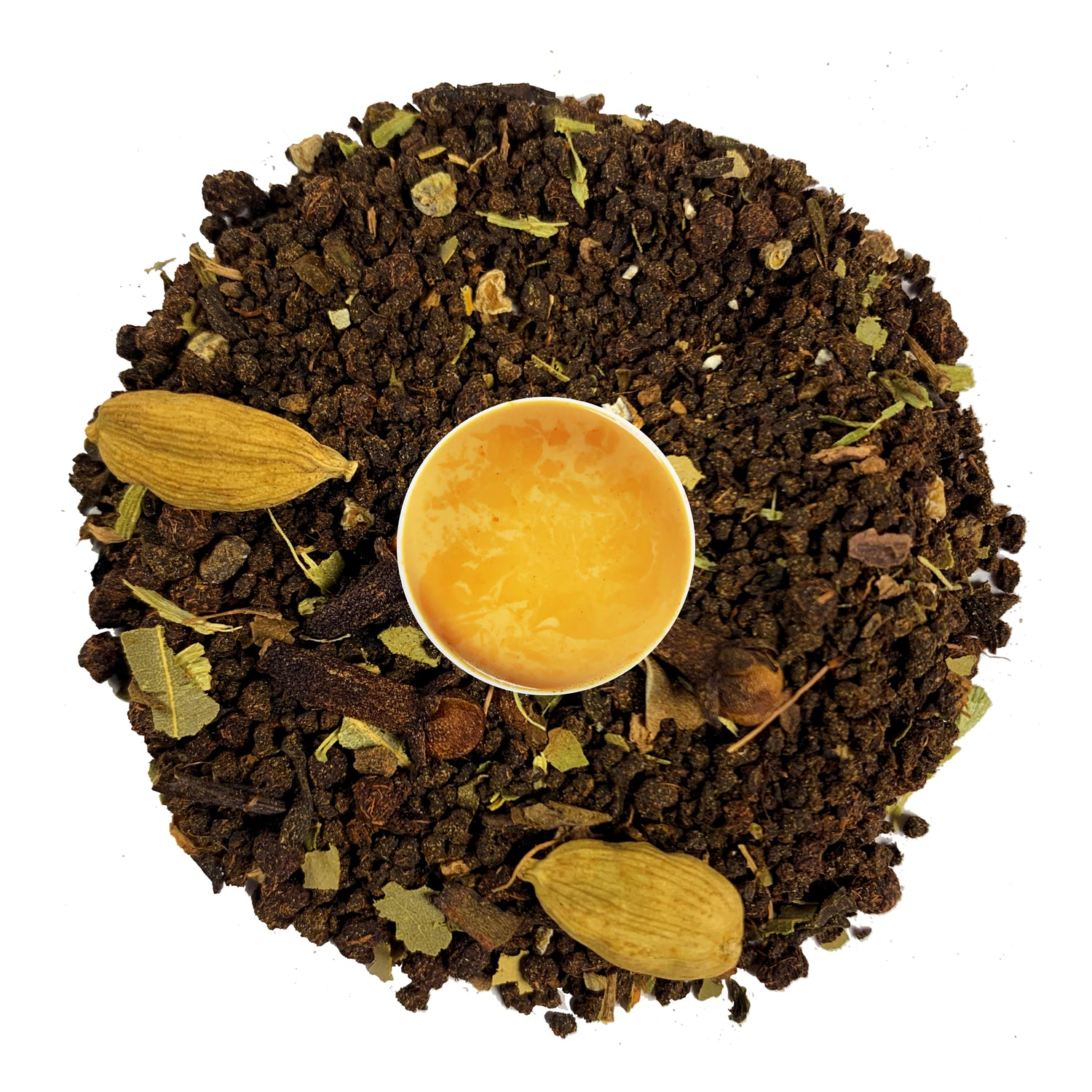
How is Tea Made? From the Seed to your Cup
Whether we need to relieve stress or anxiety, or just need refreshment and an energy boost, tea has always been our best friend. Ever wondered how this amazing beverage makes a journey to our cups? Well, the journey is long and not as simple as one might have thought as it’s not about just harvesting tea leaves and processing them. There are many essential steps entangled before, during, and after the harvesting process to make your tea full of different flavors and aromas. So, how is tea made? We will go through the fascinating process step by step. Stay tuned.
What is Tea?
What is tea and why is it so popular? Well, tea is one of the most admired beverages in the world, in fact, it is the most consumed beverage after water. There are different varieties of tea found in different parts of the world and what makes it more interesting is that all the tea comes from the same plant named Camellia Sinensis, yet each has its own unique taste and flavor. So what about the other teas that don't come from the Camellia Sinensis plant? Let's not be confused, the teas such as chamomile tea, fruit tea, ginger tea, or other non-caffeinated teas may be referred to as tea, but they are not “actual tea”. To be the “actual tea” or “real tea”, they must come from camellia Sinensis.
Yes, tea satisfies our taste buds, however, the awesome taste, flavor, and aroma are not the only reasons for the popularity of the tea, but they also won hearts for its many health benefits. The antioxidant and anti-inflammatory property the tea develops from its content of catechins and epicatechins makes it good for physical as well as psychological health.
Where do Tea Leaves Grow?
It is believed that tea originated in China as many historians suggest it was there from the Han dynasty in China from 59 BC. Today tea leaves are cultivated in many corners of the world from Asia to China, Europe, America, and Africa. However, the flavor and aroma of the tea differ according to the place where tea leaves are grown. So, do not be surprised if you find the taste of the tea different in different countries.
Even if many countries are in the tea cultivation world, there are some countries that have been successful to create a name in tea world. Here are some popular names.
- China
- India
- Kenya
- Sri Lanka
- Nepal
For the proper growth of the tea leaf, the soil quality, humidity, and climate play an important role, so the cultivation process requires meeting many environmental conditions, or else the product will lack quality and quantity.
What is the suitable tea cultivation temperature?
As already said, China is the country with the highest cultivation of tea in the world. So, what is the reason? Well, China the origin place of tea, also meets the climate conditions suitable for tea cultivation.
The tea plant, Camellia Sinensis can grow in tropical as well as subtropical climates; they flourish especially in the warm humid climate with about 1500 mm of rain in a year.
The adaptability capability of Camellia Sinensis makes the tea grow in a wide range of climates; however, the ideal temperature is 18 degree Celsius to 30 degree Celsius for maximum harvest. If the temperature requirement is not met or let’s say if it drops down below 13 or moves above 32 degrees, then tea buds grow significantly slowly due to stress, resulting in a unique rich textured tea like Himalayan Mountain Teas from Nepal.
The tea plant requires a cool as well as warm temperature, so at least 5 hours of sunlight in a day is pivotal. Remember, soil quality also plays a crucial role in tea cultivation. The slightly acidic soil with plentiful humus and organic matter is best for tea plants to thrive.
How is Tea Harvested?
Harvesting tea is the final stage before the tea producer moves forward with the production process. Before harvesting tea plants, different essential steps are followed to ensure they go through a quality life cycle.
Seeding Process
The life of a tea plant begins with soft seeds which are around 12 millimeters in size and are soft in texture. The seeds are prepared for the germination process before planting them in the soil. The process begins by keeping the seeds immersed in the water for one to two days. After that, the seeds are taken out of the water and dried in the sunlight for the next two days.
The seeds begin to split once they get sufficient sunlight. And finally, the sowing process is started which is carried out with the introduction of seeds into the soil with the seed's eye facing upward.
As the process is just the beginning of the life cycle for tea plants, they are not yet ready to go through challenging surroundings. So, they are grown in a controlled environment until the plants grow 10 to 12 inches tall. Once the tea plants are around one foot tall, they are transferred and planted outside as they are able to adapt to the outer environment by then. However, temperature control is still crucial, so a place with sufficient shade from trees is selected for protecting against direct sunlight.
Growing the Tea Plant
The field is maintained with the proper irrigation system as the tea plants require plenty of water for growing. With the controlled environment, the tea plants grow hard enough within four years as they begin to produce new leaves and shoots. Generally, the tea plant's height is maintained at the height of 4 feet, so that harvesting is easy and comfortable.
Harvesting / Picking
The harvesting process starts after the new leaves and shoots are seen in the tea plants. Manual harvesting or picking is done in order to maintain the quality of the tea. The harvester starts by picking up the new shoots and leaves from the plant and collecting it in the basket they carry at the back. The experienced collector knows the exact type of flush (the new bud with a maximum of 2 leaves) to be collected for the best tea production.
Once the teas are finished collecting, they are weighed and sent to the factories to start the production process.
Let’s note that the teas harvested with hand-picking are always superior in quality to the machine picking. So, always select the tea that is produced using a hand-picking method if you are provided with an option.
Tea Production Process
As already said, all the tea comes from the same plant, so do not be surprised if we told you that all types of tea production start with almost the same style. It is the changes made during the production process that transforms them into different tea classifications as the color, aroma, and flavor of the tea are decided during the processing time.
Orthodox Tea Production Process
The orthodox tea production process, the most common tea production process includes variations of four major steps - withering, rolling, oxidation and drying.
Step 1: Withering
As the harvested tea arrives at the factory, they are still wet and contain a lot of moisture. So, they need to be dried. Withering is the process of reducing the moisture of newly harvested tea plants. The tea plants are laid on a bamboo or wire mesh surface and balanced sunlight and air are provided for drying. The process is usually completed in 10 to 14 hours.
Step 2: Rolling
Traditionally, rolling was done manually; however, today most companies use the machine for this process. The leaves are twisted and broken so that the inside enzymes and oil of the plant are exposed to air for achieving the chemical reaction which results in the development of aroma and flavor. The highest quality teas are still rolled with hands in small batches making them incredibly tasty.
Step 3: Oxidation
Oxidation is the process where the tea gets its taste, color, and flavor. The tea plants are kept rested in controlled surroundings, maintaining warmth and moistness. The producer maintains a temperature of 80 to 85 degrees Fahrenheit for the time length depending on the type of tea being produced. For instance, the oxidized period for oolong tea is shorter as they are completed once the tea gets yellow or light brown color in the controlled environment to get a mild flavor. On the other hand, they are kept under a controlled environment for a comparatively longer period of time for black tea to get the reddish brown color with a bold and strong flavor.
Step 4: Drying
The drying process is for stopping the oxidation process, carried out to deduct the moisture content to almost 3%. The different companies use different types of drying methods, the most common methods being sun drying and pan frying.
CTC Method of Tea Making
CTC refers to Crush, Tear and Curl. The method is followed to get smaller pieces of the tea that are perfect for the tea bags. The CTC method of tea-making is very similar to the orthodox tea-making method as the process includes the same steps as withering, rolling, oxidation and drying. The only changes we see are during the rolling step. After withering the tea leaves, they are rolled into large machines containing big numbers of small and sharp teeth shape structures that grind the tea leaves into smaller pieces.
How is tea made at home?
Do you know, alongside the tea production process, the taste of your homemade tea also depends on how you prepare them?
Everyone deserves to get the best taste out of this wonderful beverage, so we have created a step-by-step list for making the best tea at home.
Step 1: Heat the water in a mug or teapot. In case your teapot is non-electric, it is ok to heat the water using the stove before pouring it into the mug.
Step 2: After boiling water, steep the tea in them. Remember, the steeping step is the most important step for determining the taste and flavor of your tea.
The steeping time and temperature depend on the type of tea you are preparing, so be attentive to get the best out of your tea.
Let's have a quick look at the temperature and steeping timetable for different types of teas.
| Tea Type | Temperature | Steeping Time |
|---|---|---|
| Black Tea | 195 degree F | 4 minutes |
| White Tea | 175 degree F | 5 minutes |
| Green Tea | 175 degree F | 4 minutes |
| Oolong Tea | 195 degree F | 5 minutes |
| Yellow Tea | 175 degree F | 4 minutes |
We understand that taste preference varies from person to person. You can adjust the temperature and steeping time to satisfy your taste buds.
Step 3: Finally, just remove the tea leaves from the pot and your tea is ready. Enjoy the tea with or without sugar as you love.
Conclusion
The taste, flavor, and aroma matter the most to any tea lover. At Danfe Tea, you can find teas that are hand-picked and hand-rolled by skillful artists, which translates into the quality of aroma, flavor, and taste which is simply incredible. Additionally, our teas are grown at high-altitude tea plantations, where the growth is slow, which translates into higher minerality and low astringency, with a thick textured liquor, unlike any other tea in the world.
Whether we need to relieve stress or anxiety, or just need refreshment and an energy boost, tea has always been our best friend. Ever wondered how this amazing beverage makes a journey to our cups? Well, the journey is long and not as simple as one might have thought as it’s not about just harvesting tea leaves and processing them. There are many essential steps entangled before, during, and after the harvesting process to make your tea full of different flavors and aromas. So, how is tea made? We will go through the fascinating process step by step. Stay tuned.
What is Tea?
What is tea and why is it so popular? Well, tea is one of the most admired beverages in the world, in fact, it is the most consumed beverage after water. There are different varieties of tea found in different parts of the world and what makes it more interesting is that all the tea comes from the same plant named Camellia Sinensis, yet each has its own unique taste and flavor. So what about the other teas that don't come from the Camellia Sinensis plant? Let's not be confused, the teas such as chamomile tea, fruit tea, ginger tea, or other non-caffeinated teas may be referred to as tea, but they are not “actual tea”. To be the “actual tea” or “real tea”, they must come from camellia Sinensis.
Yes, tea satisfies our taste buds, however, the awesome taste, flavor, and aroma are not the only reasons for the popularity of the tea, but they also won hearts for its many health benefits. The antioxidant and anti-inflammatory property the tea develops from its content of catechins and epicatechins makes it good for physical as well as psychological health.
Where do Tea Leaves Grow?
It is believed that tea originated in China as many historians suggest it was there from the Han dynasty in China from 59 BC. Today tea leaves are cultivated in many corners of the world from Asia to China, Europe, America, and Africa. However, the flavor and aroma of the tea differ according to the place where tea leaves are grown. So, do not be surprised if you find the taste of the tea different in different countries.
Even if many countries are in the tea cultivation world, there are some countries that have been successful to create a name in tea world. Here are some popular names.
- China
- India
- Kenya
- Sri Lanka
- Nepal
For the proper growth of the tea leaf, the soil quality, humidity, and climate play an important role, so the cultivation process requires meeting many environmental conditions, or else the product will lack quality and quantity.
What is the suitable tea cultivation temperature?
As already said, China is the country with the highest cultivation of tea in the world. So, what is the reason? Well, China the origin place of tea, also meets the climate conditions suitable for tea cultivation.
The tea plant, Camellia Sinensis can grow in tropical as well as subtropical climates; they flourish especially in the warm humid climate with about 1500 mm of rain in a year.
The adaptability capability of Camellia Sinensis makes the tea grow in a wide range of climates; however, the ideal temperature is 18 degree Celsius to 30 degree Celsius for maximum harvest. If the temperature requirement is not met or let’s say if it drops down below 13 or moves above 32 degrees, then tea buds grow significantly slowly due to stress, resulting in a unique rich textured tea like Himalayan Mountain Teas from Nepal.
The tea plant requires a cool as well as warm temperature, so at least 5 hours of sunlight in a day is pivotal. Remember, soil quality also plays a crucial role in tea cultivation. The slightly acidic soil with plentiful humus and organic matter is best for tea plants to thrive.
How is Tea Harvested?
Harvesting tea is the final stage before the tea producer moves forward with the production process. Before harvesting tea plants, different essential steps are followed to ensure they go through a quality life cycle.
Seeding Process
The life of a tea plant begins with soft seeds which are around 12 millimeters in size and are soft in texture. The seeds are prepared for the germination process before planting them in the soil. The process begins by keeping the seeds immersed in the water for one to two days. After that, the seeds are taken out of the water and dried in the sunlight for the next two days.
The seeds begin to split once they get sufficient sunlight. And finally, the sowing process is started which is carried out with the introduction of seeds into the soil with the seed's eye facing upward.
As the process is just the beginning of the life cycle for tea plants, they are not yet ready to go through challenging surroundings. So, they are grown in a controlled environment until the plants grow 10 to 12 inches tall. Once the tea plants are around one foot tall, they are transferred and planted outside as they are able to adapt to the outer environment by then. However, temperature control is still crucial, so a place with sufficient shade from trees is selected for protecting against direct sunlight.
Growing the Tea Plant
The field is maintained with the proper irrigation system as the tea plants require plenty of water for growing. With the controlled environment, the tea plants grow hard enough within four years as they begin to produce new leaves and shoots. Generally, the tea plant's height is maintained at the height of 4 feet, so that harvesting is easy and comfortable.
Harvesting / Picking
The harvesting process starts after the new leaves and shoots are seen in the tea plants. Manual harvesting or picking is done in order to maintain the quality of the tea. The harvester starts by picking up the new shoots and leaves from the plant and collecting it in the basket they carry at the back. The experienced collector knows the exact type of flush (the new bud with a maximum of 2 leaves) to be collected for the best tea production.
Once the teas are finished collecting, they are weighed and sent to the factories to start the production process.
Let’s note that the teas harvested with hand-picking are always superior in quality to the machine picking. So, always select the tea that is produced using a hand-picking method if you are provided with an option.
Tea Production Process
As already said, all the tea comes from the same plant, so do not be surprised if we told you that all types of tea production start with almost the same style. It is the changes made during the production process that transforms them into different tea classifications as the color, aroma, and flavor of the tea are decided during the processing time.
Orthodox Tea Production Process
The orthodox tea production process, the most common tea production process includes variations of four major steps - withering, rolling, oxidation and drying.
Step 1: Withering
As the harvested tea arrives at the factory, they are still wet and contain a lot of moisture. So, they need to be dried. Withering is the process of reducing the moisture of newly harvested tea plants. The tea plants are laid on a bamboo or wire mesh surface and balanced sunlight and air are provided for drying. The process is usually completed in 10 to 14 hours.
Step 2: Rolling
Traditionally, rolling was done manually; however, today most companies use the machine for this process. The leaves are twisted and broken so that the inside enzymes and oil of the plant are exposed to air for achieving the chemical reaction which results in the development of aroma and flavor. The highest quality teas are still rolled with hands in small batches making them incredibly tasty.
Step 3: Oxidation
Oxidation is the process where the tea gets its taste, color, and flavor. The tea plants are kept rested in controlled surroundings, maintaining warmth and moistness. The producer maintains a temperature of 80 to 85 degrees Fahrenheit for the time length depending on the type of tea being produced. For instance, the oxidized period for oolong tea is shorter as they are completed once the tea gets yellow or light brown color in the controlled environment to get a mild flavor. On the other hand, they are kept under a controlled environment for a comparatively longer period of time for black tea to get the reddish brown color with a bold and strong flavor.
Step 4: Drying
The drying process is for stopping the oxidation process, carried out to deduct the moisture content to almost 3%. The different companies use different types of drying methods, the most common methods being sun drying and pan frying.
CTC Method of Tea Making
CTC refers to Crush, Tear and Curl. The method is followed to get smaller pieces of the tea that are perfect for the tea bags. The CTC method of tea-making is very similar to the orthodox tea-making method as the process includes the same steps as withering, rolling, oxidation and drying. The only changes we see are during the rolling step. After withering the tea leaves, they are rolled into large machines containing big numbers of small and sharp teeth shape structures that grind the tea leaves into smaller pieces.
How is tea made at home?
Do you know, alongside the tea production process, the taste of your homemade tea also depends on how you prepare them?
Everyone deserves to get the best taste out of this wonderful beverage, so we have created a step-by-step list for making the best tea at home.
Step 1: Heat the water in a mug or teapot. In case your teapot is non-electric, it is ok to heat the water using the stove before pouring it into the mug.
Step 2: After boiling water, steep the tea in them. Remember, the steeping step is the most important step for determining the taste and flavor of your tea.
The steeping time and temperature depend on the type of tea you are preparing, so be attentive to get the best out of your tea.
Let's have a quick look at the temperature and steeping timetable for different types of teas.
| Tea Type | Temperature | Steeping Time |
|---|---|---|
| Black Tea | 195 degree F | 4 minutes |
| White Tea | 175 degree F | 5 minutes |
| Green Tea | 175 degree F | 4 minutes |
| Oolong Tea | 195 degree F | 5 minutes |
| Yellow Tea | 175 degree F | 4 minutes |
We understand that taste preference varies from person to person. You can adjust the temperature and steeping time to satisfy your taste buds.
Step 3: Finally, just remove the tea leaves from the pot and your tea is ready. Enjoy the tea with or without sugar as you love.
Conclusion
The taste, flavor, and aroma matter the most to any tea lover. At Danfe Tea, you can find teas that are hand-picked and hand-rolled by skillful artists, which translates into the quality of aroma, flavor, and taste which is simply incredible. Additionally, our teas are grown at high-altitude tea plantations, where the growth is slow, which translates into higher minerality and low astringency, with a thick textured liquor, unlike any other tea in the world.










